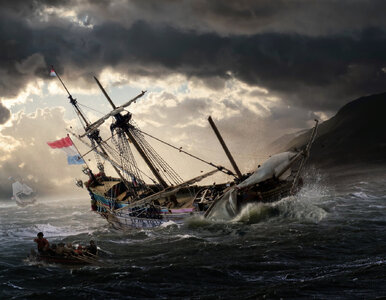Looking at the reactions on this threat (thank you all for your enthusiasm) I think we can draw the conclusion that the concept of building a ship model in an obvious situation catches on with more model builders. Of course making scenery models (either within or without a natural setting) is not a new idea. Still, many model builders reject the idea, because it seems to harm the neutral state in which they like a model to be depicted. Much to my regret too many models are displayed in such an inert state, often with furled sails and tidy, clean decks. Or the sails are hung in an unreal baggy way that does no right to the material they are made of. Although I admire the technical skills of the builders who succeed in creating such clean models (mostly because I am too sloppy a builder myself), I always feel a sort of pity looking at them. I miss the wear and tear, the effect of heavy weather and salt water and the direct impact of aging on the model. Nothing is as rewarding as bellowing sails in the wind (or loose hanging ones in a calm) and flags flapping in the breeze. They bring the model to live. In real life ships are tools, utensils, and often they are treated like that. They are battered and bruised, damaged and hurt, and not half as tidy as a model can suggest. Still model builders depict them like they are a sort of abstract ghosts. Such models may be beautiful objects, but for me the connection with reality is endlessly far away.
This scratches the surface of the reasons why we actually are building ship models. I want to emphasize that no way or method is 'wrong'. Everybody is free to do whatever he (or she) likes, but one of the reasons for me to publish a new book is the feeling that we can obtain more realism in our models by simply seeing ships as objects in 'a situation'.
You will read all about it in 'Dutch 17th Century Shipmodels in Paper', soon available at SeaWatchBooks.
This scratches the surface of the reasons why we actually are building ship models. I want to emphasize that no way or method is 'wrong'. Everybody is free to do whatever he (or she) likes, but one of the reasons for me to publish a new book is the feeling that we can obtain more realism in our models by simply seeing ships as objects in 'a situation'.
You will read all about it in 'Dutch 17th Century Shipmodels in Paper', soon available at SeaWatchBooks.
Last edited:













